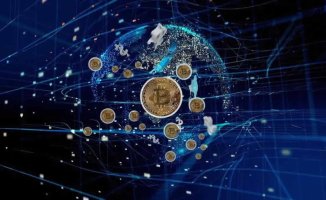After a few years in which digital art garnered the most attention, professionals and experts miss physical productions. In fact, the same thing happens with the public. And, unlike what happened until recently, none of these actors hide it. From the Venice Biennale to Art Basel in Miami, from public centers to private galleries, traditional materials such as paint, ceramics, wood or fabrics have regained their relevance.
Many artists and dealers introduced the virtual creations as a reaction to earlier pieces. According to them, in this way one could go further —in expression and in business— than with conventional works. It seemed that the internet of things, robotics, artificial intelligence, virtual-mixed-augmented realities or the blockchain, among other technologies of the fourth and fifth industrial revolutions, were going to replace paintings and sculptures.
But it is not being so. The artistic apocalypse will have to wait. This means there is room for everyone. Until April 15, the Museum of Modern Art in New York (United States), the famous MoMA will exhibit Unsupervised in its atrium, considered (almost) unanimously a reference in the production of artificial intelligence systems. Today, it concentrates more spectators than Starry Night, by Vincent Van Gogh.
Its creator is Refik Anadol, a Turk residing in Los Angeles. He is 38 years old and started experimenting with machine learning seven years ago, during a residency at Google. His work served as the background during the last Grammy Awards ceremony. He has two more works at MoMA, although none stand out as Unsupervised, which uses machine learning to "interpret" the museum's permanent collection and "dream" about what abstraction will be—or could be.
MoMA curator Michelle Kuo stresses that Anadol's purpose is far removed from the imitations on which much artificial intelligence is based. She states: "That's exciting, however, it's not really art." Even the Turkish author's "custom deep-level algorithm" wouldn't be possible if the New York museum hadn't uploaded more than 140,000 records, that is, the paintings, sculptures and installations they have cataloged, to the open source program GitHub.
The spiritual ambition of the first abstract artists -Wassily Kandinsky, Piet Mondrian or Kazimir Malevich- was also to invoke the invisible through the visible through a language that could be universal. Then the utopian led to a certain sense of failure. However, the development of artificial intelligence can boost the virtual and allow the tangible to continue to grow. As Kuo recalls, Unsupervised is re/inventing abstraction before our very eyes.













